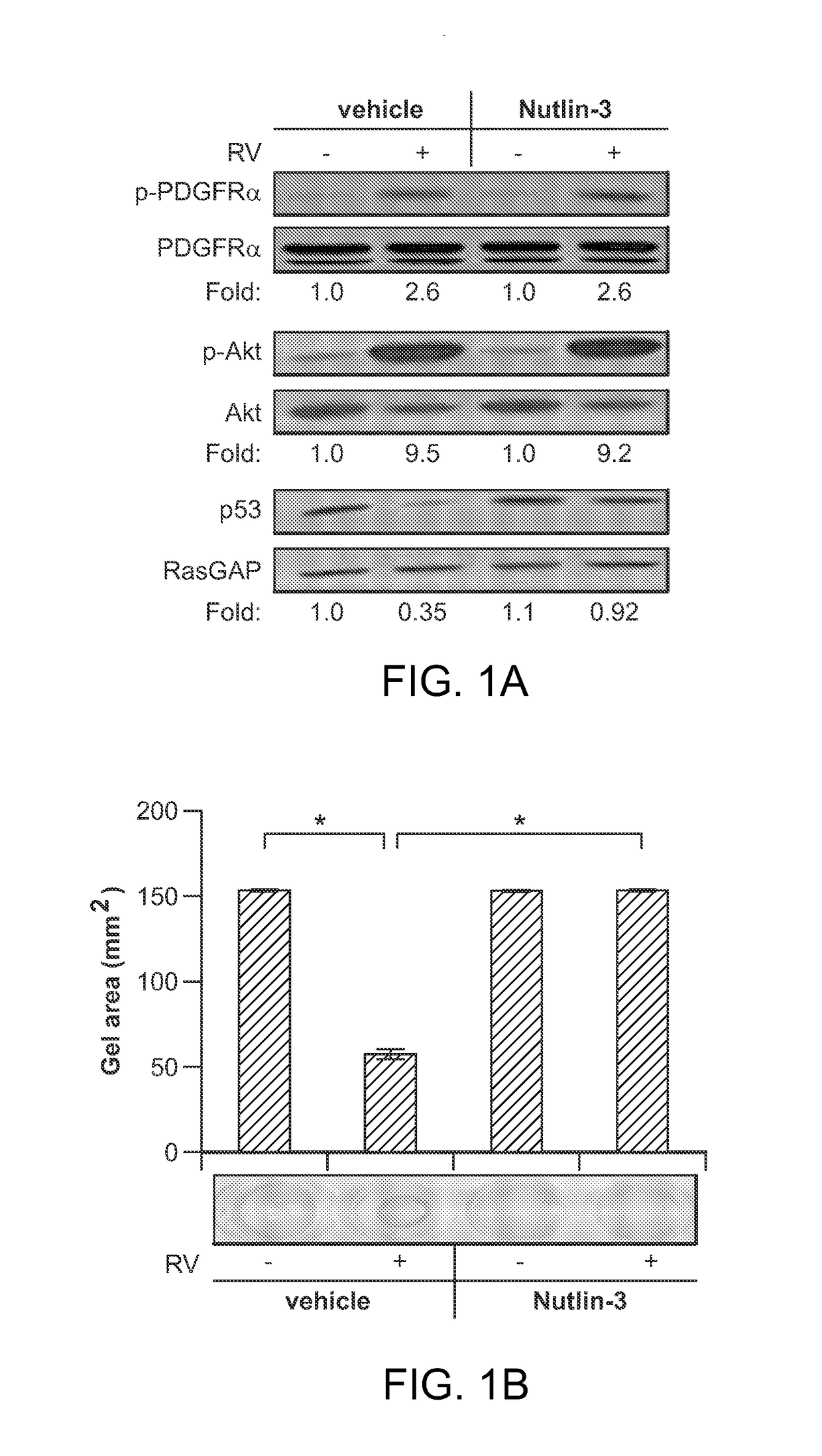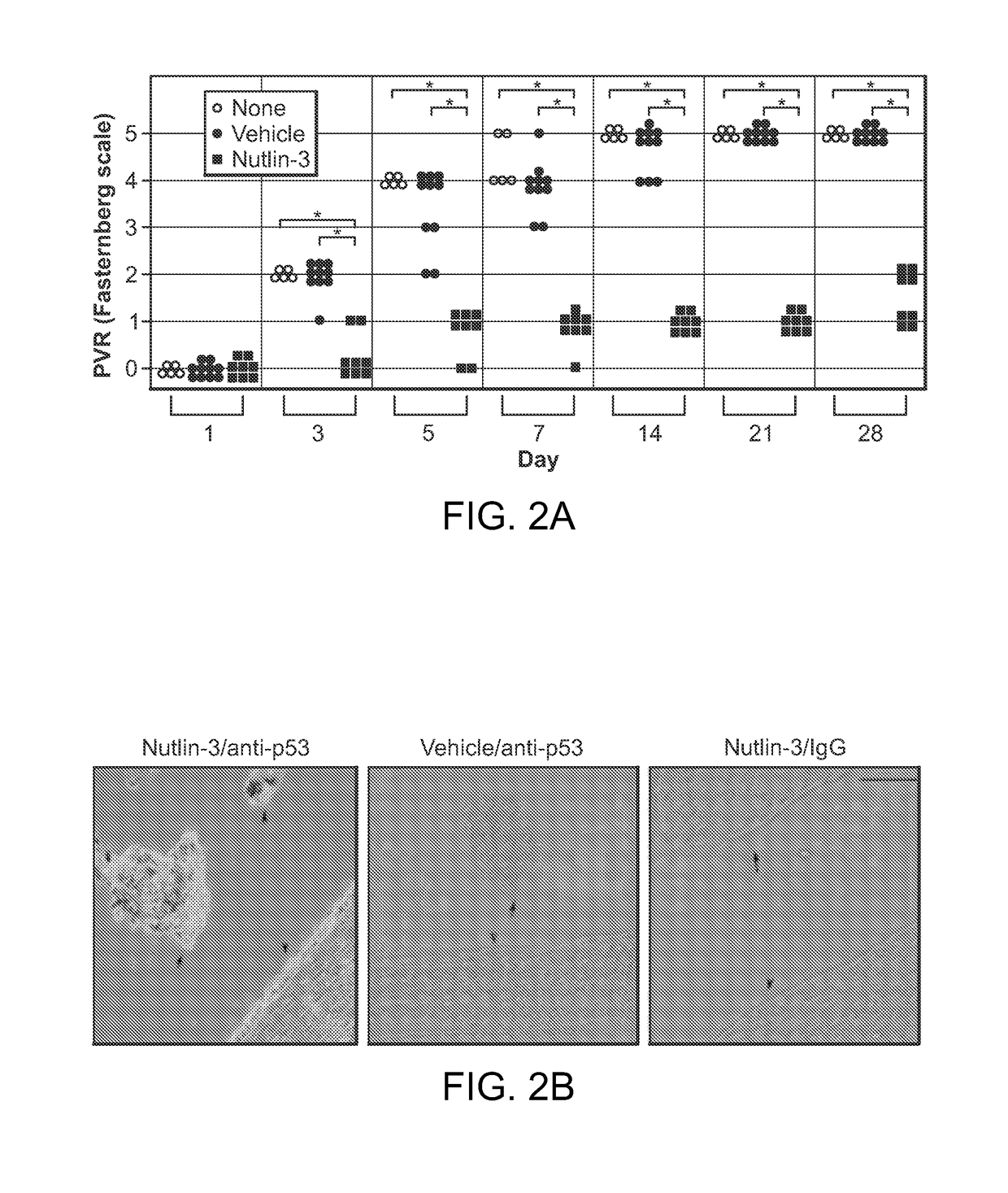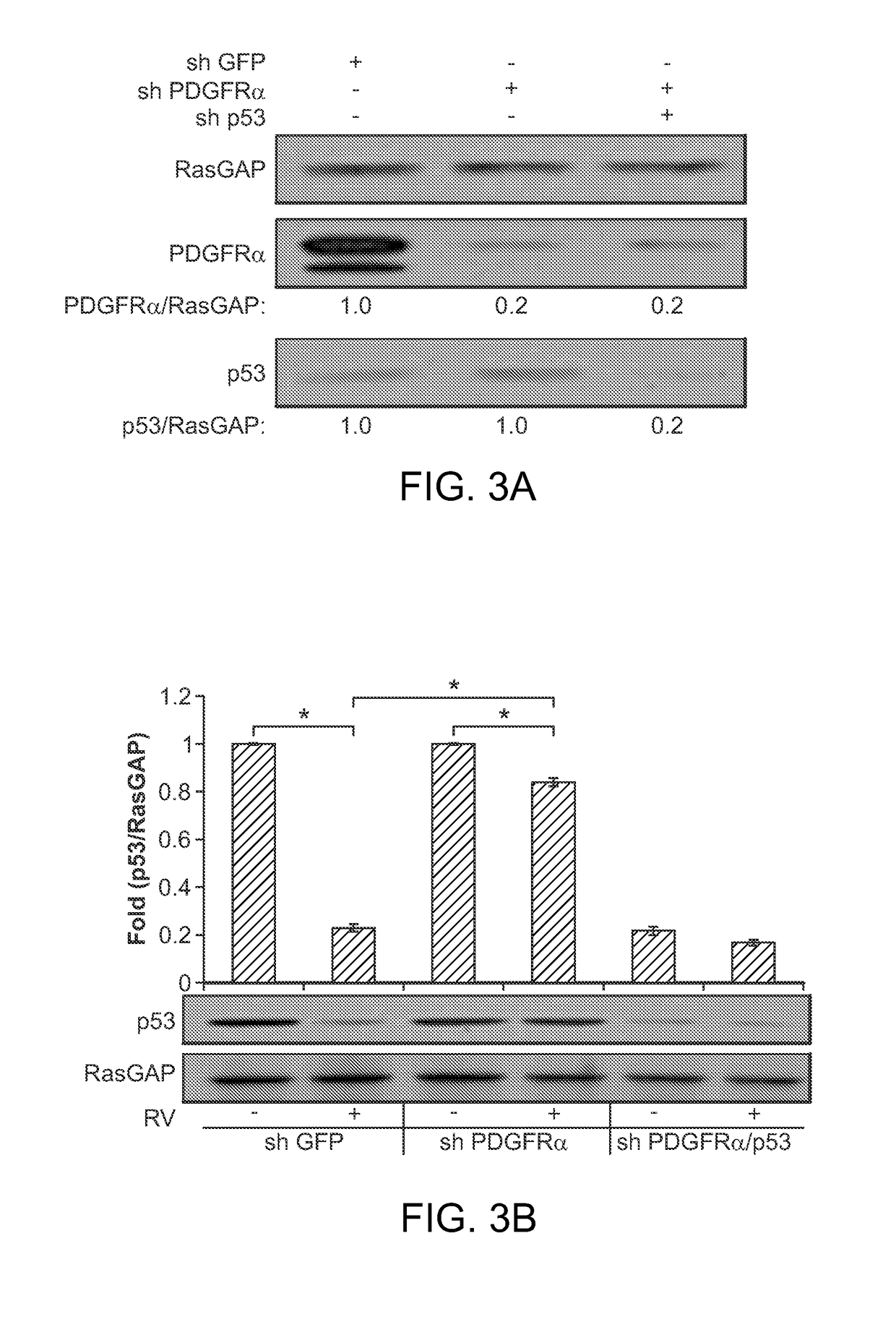Nutlin-3A for treatment of proliferative vitreoretinopathy
a technology of vitreoretinopathy and nutlin, which is applied in the field of ophthalmology, can solve the problems of recurrence risk of the procedure, and achieve the effects of reducing the severity and/or frequency of the symptoms, eliminating the symptoms, and facilitating improvement or remediation of damag
- Summary
- Abstract
- Description
- Claims
- Application Information
AI Technical Summary
Benefits of technology
Problems solved by technology
Method used
Image
Examples
example 1
Materials and Methods
[0107]The materials and methods used in the examples described herein are set forth below.
Major Reagents and Cell Culture
[0108]The phospho-Y742 PDGFRα antibody was raised against the phospho-peptide [KQADTTQpYVPMLDMK (SEQ ID NO: 3), where the lower case “p” represents the phosphorylated Tyrosine residue] (Lei H et al., 2010 Am J Pathol, 177:132-140). The Ras GTPactivating protein (RasGAP) antibody was crude rabbit antiserum against a GST fusion protein including the SH2-SH3-SH2 region of the human RasGAP (Rosenkranz S et al., 1999 J Biol Chem, 274:28335-28343). Antibodies against PDGFRα, phospho-Akt (S473), Akt, and p53 were purchased from Cell Signaling Technology (Beverly, Mass.). Secondary antibodies (horseradish peroxidase-conjugated goat anti-rabbit immunoglobulin G, and goat anti-mouse immunoglobulin G) were purchased from Santa Cruz Biotechnology (Santa Cruz, Calif.). Enhanced chemiluminescent substrate for detection of horseradish peroxidase was from Pie...
example 2
Suppressing p53 was Essential for RV-Induced Contraction, and Retinal Detachment
[0118]RV contains a variety of non-PDGFs that indirectly activate PDGFRα and thereby chronically stimulate Akt (Lei H et al., 2011 Mol Cell Biol, 31:1788-1799), which phosphorylates and activates Mdm2 (Zhou B P et al., 2001 Nat Cell Biol, 3:973-982) that mediates a decline in the level of p53 (Ogawara Y et al., 2002 J Biol Chem, 277:21843-21850; Gottlieb T M, et al., 2002 Oncogene, 21:1299-1303; Haupt Y et al., 1997 Nature, 387:296-299). Nutlin-3a antagonizes the interaction of Mdm2 and p53, and thereby prevents Mdm2-mediated reduction of p53 (Vassilev L T et al., 2004 Science, 303:844-848). Because of these properties, it was determined whether Nutlin-3a would prevent RV-mediated reduction in the level of p53, contraction of cells in collagen gels and protect rabbits from developing PVR. Primary rabbit conjunctival cells (RCFs) were utilized in these experiments because they robustly contract collagen g...
example 3
PDGFRα Did More than Reduce p53 to Promote Contraction
[0124]To assess if reducing p53 was the only PDGFRα-mediated event required for contraction in response to RV, this outcome was compared in sh GFP and sh p53 cells. If it was, then contraction of sh 53 cells would be RV-independent. As shown in FIG. 11, this was not the case. While basal contraction of sh 53 cells was enhanced, they responded well to RV. These observations indicated that PDGFRα did more than reduce the level of p53 in order to mediate RV-dependent contraction.
[0125]The same question was addressed for 3 additional cellular responses associated with PVR, proliferation and protection from apoptosis and senescence. Like contraction, proliferation of sh p53 cells was responsive to RV (FIG. 5A), whereas protection from apoptosis and senescence were fully engaged in unstimulated cells and RV did not enhance these responses further (FIGS. 5B and C). These findings indicate that reducing p53 was sufficient to trigger some...
PUM
| Property | Measurement | Unit |
|---|---|---|
| molecular weight | aaaaa | aaaaa |
| density | aaaaa | aaaaa |
| pH | aaaaa | aaaaa |
Abstract
Description
Claims
Application Information
 Login to View More
Login to View More - R&D
- Intellectual Property
- Life Sciences
- Materials
- Tech Scout
- Unparalleled Data Quality
- Higher Quality Content
- 60% Fewer Hallucinations
Browse by: Latest US Patents, China's latest patents, Technical Efficacy Thesaurus, Application Domain, Technology Topic, Popular Technical Reports.
© 2025 PatSnap. All rights reserved.Legal|Privacy policy|Modern Slavery Act Transparency Statement|Sitemap|About US| Contact US: help@patsnap.com



